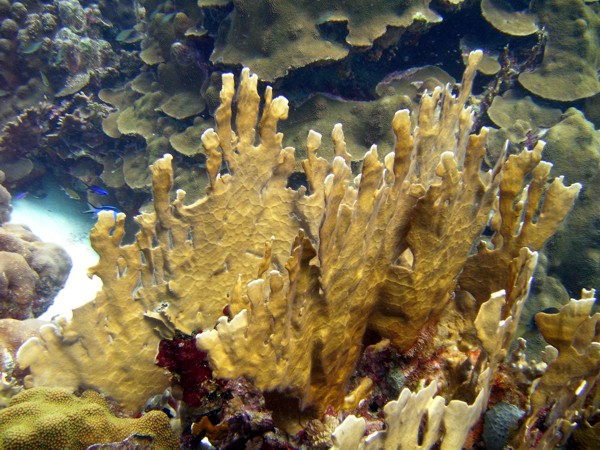In the process of diving, we are subjecting our bodies to an alien environment. This environment exposes our bodies to conditions that we are not accustom. Divers need protection in a few different forms:
- Thermal protection: The major reason for protection is Thermal protection. Keep in mind that water conducts heat 25 times faster than air. In air, our bodies would be warm at 75 deg F. Underwater, most people would chill very quickly at 75 deg F. Our bodies can not tolerate a drop in temperature. Hypothermia develops after a drop of only a few degrees.
- Abrasion protection: Rocks, shipwrecks, shells, corals can all easily scratch, or cut through exposed skin.
- Marine organism protection: especially in tropical waters, there are many stinging organisms both on the reef, and floating in the water. Sea Urchins, scorpion fish, lion fish and a long list of others have sharp if not poisonous barbs that can easily hurt a diver.
- Sun protection: While not as obvious, the sun in the tropics can burn sensitive skin on the deck of a boat, or even while we are snorkeling in the water.
The type of protection available breaks down into three groups:
- Dive Skin: These provide no thermal protection, but do provide the other three. They are often made of Lycra to hold the suit close to the body and reduce drag.
- Wetsuits: These are made of Neoprene rubber, which consists of thousands of small gas bubbles. The thicker the wetsuit, the more bubbles, and therefore the more thermal protection it provides. The thickness is measured in millimeters (mil) and varies form 0.5 – 7.0. A small amount of water enters the suit (hence the name) but the body quickly bouncy castle for sale warms this water, and the suit insulates it from the outside water. In order to work properly, they must be snug to prevent water from flushing through the suit and cooling the body.
- Drysuits: These provide an airspace under the suit that can be inflated to provide protection. An undergarment holds the air in place around the body and reduces air movement to the highest part of the suit.
Which to use:
Since each diver responds differently to cold, it’s impossible to give an exact answer. Here are some factors that affect how much thermal protection is needed:
- Water temp: Duh. Colder water will need more protection.
- Depth: Often it is cooler down deep, and wetsuits will lose some of their protection as we go deeper.
- Air temp: On an overcast day, it can be cooler in the air than under water.
- The diver: Size, fitness, metabolism, even what was eaten for breakfast will all affect the reaction to cold.
- Length of dive: Longer exposures will require more protection.
- Number of dives: More dives done in a day or over a week can cool our bodies slowly.
There is no right suit for all divers under a given conditions. No one can say “you’ll be warm in a 3 mil suit at 80 deg F.”. However, here are some guidelines:
Dive skins are used in very warm water ( over 85 Deg F ). They have little to no thermal protection, but do provide a layer of protection from sun, scrapes, and stinging organisms. In tropical environments, this protection can be very important. Corals, sea urchins, and shells can cause punctures and abrasions. Also, the Caribbean sun can cause dangerous sunburn very quickly. If you don’t need the thermal protection, it’s still advisable to wear some form of dive skin.
If the water temperature is below 85 degrees, many people should consider a 3 mil wetsuit. At 80 degrees, many will wear a suit between 3-5 mil. On the other hand, some very cold people will where a 7mil suit. As the water get colder, the thickness of the suit can be increased.
Since water temperature varies throughout the year, it can be beneficial to consider layers. A 3 mil shorty can be worn over a 3 mil suit when the weather turns cold. Or, a hooded vest can be warn under a suit to keep the core warm.
Below about 60 Deg F, many people are thinking drysuit. Some will stay with a wetsuit as long as possible due to the cost of a drysuit. For longer dives in colder water, drysuits are heaven sent. With a drysuit, dives under the ice in lakes are possible. To handle cooler temperatures in a drysuit, the undergarment thickness is increased to create a larger air space around the diver. Some exotic materials are often used in the undergarment provide more thermal protection for the same size air space.
Unfortunately, when discussing thermal protection, there is no right answer. It all depends on the diver, and trial and error may be the best approach. One parting point: If you’re warm, you can flush water through the suit, or remove your hood to cool off. If you’re cold, you have to end the dive to warm up. It’s better to error toward the warm side.

